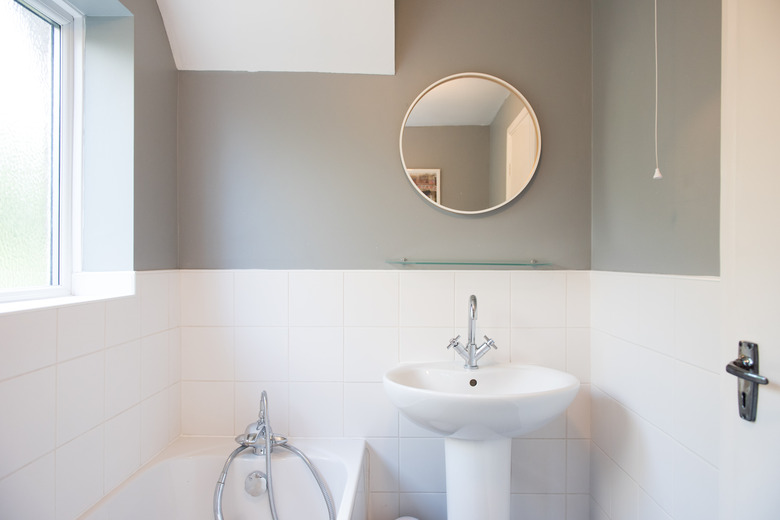How To Paint Plastic Tubs And Showers
We may receive a commission on purchases made from links.
Bathtubs and showers are often made of plastic to ensure they're hard-wearing and durable. However, even the most long-lasting of materials will likely become worn out with age. Scuff marks and discoloration can make a plastic bathtub or shower look dirty, dingy and past its best. While it can be tempting to fully replace your bathroom fittings, this can be extremely expensive and time-consuming.
Knowing how to paint plastic tubs and showers at home can breathe new life into an older bathroom. The Bath Business claims this can be an ideal way to cover up old staining. On top of this, painting your plastic bathtub and shower can offer a different look to a bathroom if you opt for a fresh new shade of paint.
What You'll Need
What You'll Need
As Miracle Method explains, acrylic enamel is the best material for the job. This can be purchased in a typical tub or in spray bottle. If you do opt for a tub of paint, a small roller tends to work better than a brush to achieve an even and streak-free finish.
Alongside your paint, you'll need a specific bonding agent to use as a primer. This will help smooth out the surface of your plastic tub or shower and therefore allow your paint to go on more smoothly. It will also help your paint to adhere, which is essential if you want your paint job to be as long-lasting as possible.
You'll also need the correct safety gear before attempting to paint your plastic tub or shower at home. As Victorian Plumbing explains, you'll need to wear a face mask and a pair of gloves while undertaking the task to protect your skin and respiratory system. You'll also want to lay down something to cover your floor in case of paint drips (newspaper works well) and cover your taps and plug holes with something like masking tape to keep them free of paint.
Prepping Your Tub or Shower
Prepping Your Tub or Shower
The first stage of painting your bathtub or shower is giving the entire unit a deep clean. Use your usual bathroom cleaner and an abrasive sponge to get your surface as clean as possible. You should then sand the tub with fine sandpaper. As US Mobile Home Pros explains, sanding the surface of the plastic will give your new acrylic enamel something to grip on to.
You should wipe out your tub to remove any traces of grit, plus ensure it's as dry as possible. Any moisture leftover can interfere with your paint. You should also cover up the edges of your tub or shower stall with tape and cover any metal parts within your tub too.
The final stage before painting is applying a bonding agent. This will be the key to getting an attractive finish to your paint job. Make sure you leave it adequate time to dry before going in with your paint of choice.
Paint Plastic Tubs and Showers
Paint Plastic Tubs and Showers
There are a few different ways of applying your paint. You can use a spray method, which according to the BathShack.com gives the most even finish, though this tends to be more expensive and messy. Brushes and rollers are much more affordable, and if you take your time, they can offer an equally even finish.
Take time applying your paint to the entirety of the tub or shower in one even layer. Allow adequate drying time according to your paint's instructions, then apply a second layer if necessary. Finally, you can finish with a layer of acrylic top coat to seal in your paint and add extra shine.
